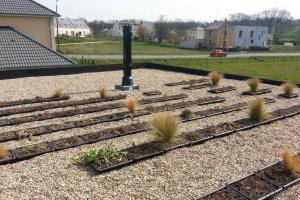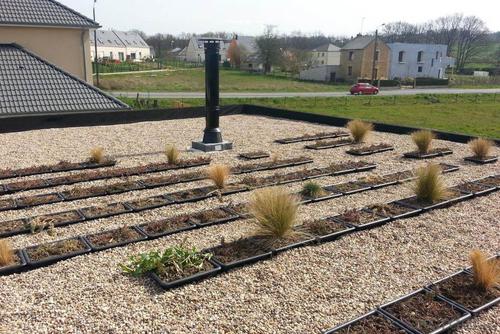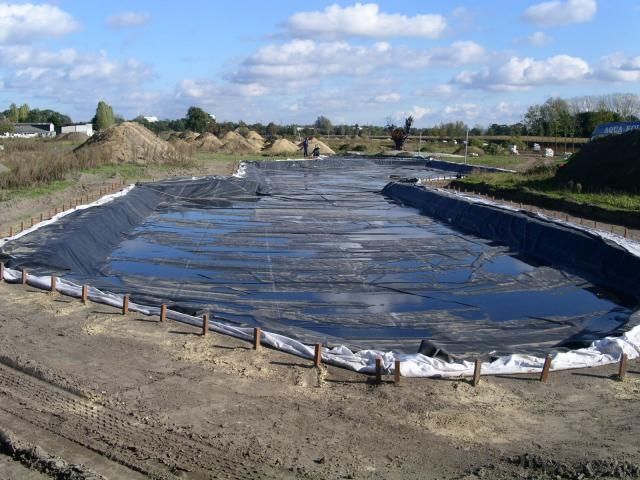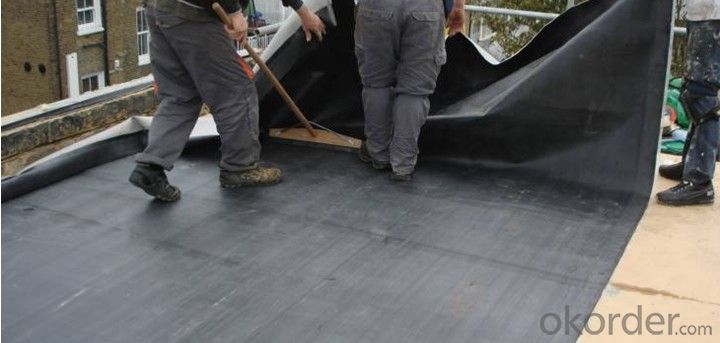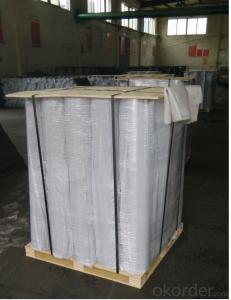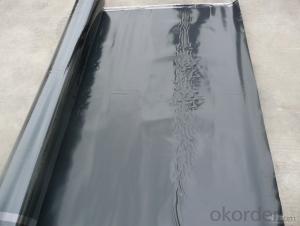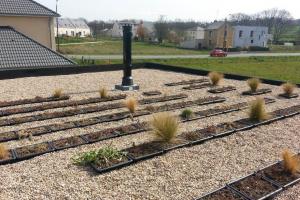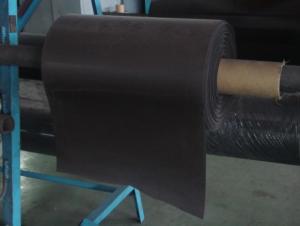EPDM Rubber Waterproof Membrane for Agriculture
- Loading Port:
- Shanghai
- Payment Terms:
- TT OR LC
- Min Order Qty:
- 50000 m²
- Supply Capability:
- 5000000 m²/month
OKorder Service Pledge
OKorder Financial Service
You Might Also Like
EPDM Rubber Waterproof Membrane for Agriculture
Description Of EPDM Rubber Waterproof Membrane for Agriculture:
This waterproof coiled material is of high elasticity with best performance among high polumer waterproof coiled material in the world.It is also the most typical one in the world.Waterproof coiled material made of ternary ethylene-propylene rubber is produced with the use of the most advanced contiuous extrusion and vulcanization technology and related equipments which are specially designed for production of such product.It is good in compactness,without bubble and performance difference in length and breadth,perfomances reach or exceed the demands of GB18173.1-2000 standard.
Main Features of EPDM Rubber Waterproof Membrane for Agriculture:
1.EPDM waterproof membrane for bridge engineering waterproof
2.EPDM waterproof membrane for water conservancy projects ,such as river bank,lake dam seepage.
3.EPDM waterproof membrane for the municipal engineering.
4.EPDM waterproof membrane for aquaculture.
Specifications of EPDM Rubber Waterproof Membrane for Agriculture:
| Number | Item | Unit | Value | |
| 1 | Size Variation | Thichness | % | ±10 |
| Width | % | ±1 | ||
| Length | % | Allowed negative | ||
| 2 | Breaking tensile strength at normal temperature | Mpa | ≥7.5 | |
| Breaking tensile strength at 70°C | Mpa | ≥2.3 | ||
| 3 | Breaking elongation at normal temperature | % | ≥450 | |
| Breaking elongation at -20°C | % | ≥200 | ||
| 4 | Tear strength | KN/m | ≥25 | |
| 5 | Impermeability(30min) | * | 0.3Mpa no leakage | |
| 6 | Bending at low tempreture | °C | ≤-40 | |
| 7 | Stretch tensor at heating | Elongate | mm | ≤2 |
| Shrink | mm | ≤4 | ||
| 8 | Air oven aging(80°C×168h) | Tensile strength at break retained | % | ≥80 |
| Elongation at break retained | % | ≥70 | ||
| 9 | Anti-alkali | Tensile strength at break retained | % | ≥80 |
| Elongation at break retained | % | ≥80 | ||
| 10 | Nuture weathing at manual simulation | Tensile strength at break retained | % | ≥80 |
| Elongation at break retained | % | ≥70 | ||
Applications of EPDM Rubber Waterproof Membrane for Agriculture:
Widely used in roofs, basement, toilet ,swimming pool, and all kinds of industry and civil building waterproofing, reservoir, vivicism, bridge, underground, tunnel and dam waterproofing ,especially to the keystone waterproofing projects which is durability, high corrosion resistance and easy deformation.

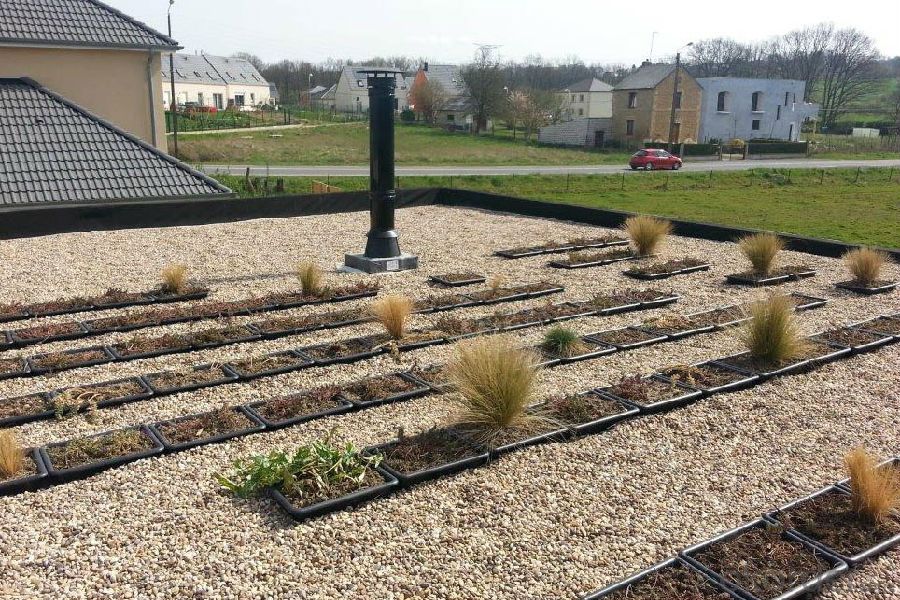

IMages of EPDM Rubber Waterproof Membrane for Agriculture:
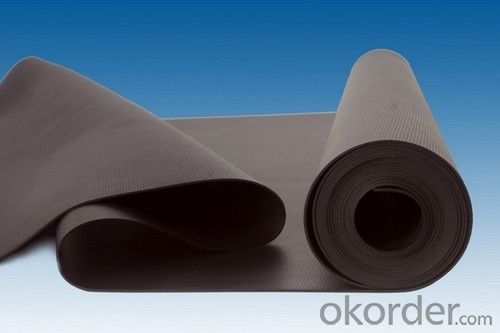
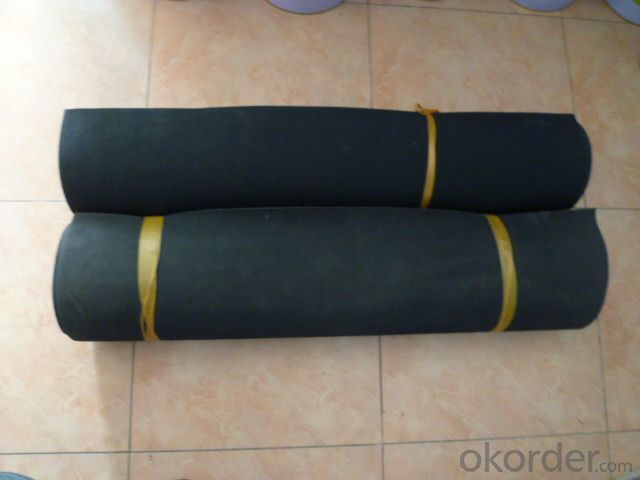


FAQ of EPDM Rubber Waterproof Membrane for Agriculture:
1. What are we supplying?
We are specialized in producing Colorful Asphalt Roof Shingle, SBS/APP modified bitumen waterproof membrane, Self adhesive bitumen waterproof membrane, PVC waterproofing membrane, EPDM rubber roofing membrane, Single Component Polyurethane Waterproof Coating, and Spray Polyurea Waterproof Coating
.
2. How Many years experience do we have?
We have been exported to more than 20 countries in the past 15 years.
3. How long do we usually reply your request?
We always reply our customer within 24 hours.
- Q: How does a waterproofing membrane handle water infiltration from above?
- A waterproofing membrane is designed to prevent water infiltration from above by creating a barrier that is impermeable to water. It is typically made of a durable and flexible material, such as rubber or asphalt, that is specifically engineered to withstand the effects of water exposure. When water falls on the surface above the waterproofing membrane, it acts as a protective layer, preventing the water from seeping through and reaching the underlying structure. The membrane effectively repels the water, ensuring that it does not penetrate into the building or any other protected area. To further enhance its water resistance, the membrane is often installed with overlapping seams and sealed with adhesive or heat to create a continuous and watertight barrier. This helps to prevent any potential gaps or weak points where water could potentially infiltrate. In addition to its impermeability, a waterproofing membrane is also designed to handle water infiltration by providing drainage pathways for any water that may accumulate on its surface. This is achieved through the use of channels or slopes that direct water away from the protected area, ensuring that it is effectively drained and does not accumulate to cause damage. Overall, a waterproofing membrane is specifically engineered to handle water infiltration from above by creating a strong and impenetrable barrier, as well as providing effective drainage mechanisms to prevent water accumulation.
- Q: How does a waterproofing membrane compare to other waterproofing methods?
- A waterproofing membrane is highly effective in preventing water intrusion compared to other waterproofing methods. It forms a continuous barrier that is resistant to water penetration, protecting the underlying structure from moisture damage. Unlike other methods like sealants or coatings, a membrane offers superior durability and flexibility, ensuring long-term waterproofing performance. Additionally, membranes are easy to install and can cover large areas efficiently, making them a preferred choice in various construction projects.
- Q: Are waterproofing membranes resistant to salt damage?
- Yes, waterproofing membranes are generally resistant to salt damage. They are designed to protect against moisture and other environmental factors, including saltwater. The membranes are specifically engineered to provide a barrier that prevents water and salts from infiltrating and causing damage to underlying structures.
- Q: Can a waterproofing membrane be used for water fountains or decorative features?
- Water fountains and decorative features can benefit from the use of a waterproofing membrane. These membranes are specifically designed to create a protective barrier against water penetration and can be applied to various surfaces, including those found in water fountains and decorative features. The materials used to make these membranes, such as rubber, bitumen, or liquid-applied coatings, possess excellent waterproofing properties. By applying a waterproofing membrane, you can effectively prevent water from infiltrating the underlying structure and causing damage. This is particularly crucial for water fountains and decorative features, as they are constantly exposed to water. Moreover, waterproofing membranes can also play a role in averting leaks, cracks, and other potential issues that may arise from water exposure, thereby extending the lifespan of the fountain or decorative feature.
- Q: Can a waterproofing membrane be used for water fountains or decorative features?
- Yes, a waterproofing membrane can be used for water fountains or decorative features. Waterproofing membranes are designed to provide a protective barrier against water penetration and can be applied to various surfaces, including those used in water fountains and decorative features. These membranes are typically made from materials such as rubber, bitumen, or liquid-applied coatings, which offer excellent waterproofing properties. By applying a waterproofing membrane, you can ensure that water does not seep into the underlying structure and cause damage. This is particularly important for water fountains and decorative features as they involve constant exposure to water. Additionally, waterproofing membranes can also help prevent leaks, cracks, and other potential issues that may arise from water exposure, thus prolonging the lifespan of the fountain or decorative feature.
- Q: Can a waterproofing membrane be used in balconies or decks?
- Yes, a waterproofing membrane can be used in balconies or decks. Waterproofing membranes are specifically designed to prevent water penetration and protect underlying structures from moisture damage. Balconies and decks are often exposed to the elements, including rain and snow, which can lead to water damage and deterioration. By installing a waterproofing membrane, it creates a barrier that prevents water from seeping into the underlying structure, ensuring its longevity and durability. Additionally, waterproofing membranes can also protect against other forms of water damage, such as mold and mildew growth, which can be detrimental to the integrity of the balcony or deck. Overall, using a waterproofing membrane in balconies or decks is an effective solution to maintain their functionality and extend their lifespan.
- Q: About asphalt waterproofing membrane
- 2, SBS refers to the use of SBS rubber into the asphalt, the performance of the asphalt to improve the use of polyester felt or fiberglass as a tire base, the surface with polyethylene film or other materials for the isolation layer. The general thickness of 3mm 4mm.
- Q: How does a waterproofing membrane adhere to a surface?
- A waterproofing membrane adheres to a surface through the use of special adhesives or sealants that are specifically designed to bond with the material of the surface. These adhesives create a strong and durable bond between the membrane and the surface, ensuring that it remains securely in place and effectively prevents the penetration of water or moisture.
- Q: Can a waterproofing membrane be used on tunnels with ventilation systems?
- Yes, a waterproofing membrane can be used on tunnels with ventilation systems. In fact, it is commonly used to prevent water infiltration and protect the structure of the tunnel. The membrane is installed on the exterior walls and ceiling of the tunnel, ensuring that any water that may enter is diverted away from the tunnel and its ventilation system. This helps to maintain the integrity of the tunnel and ensures proper functioning of the ventilation system.
- Q: Can a waterproofing membrane be used in geotechnical applications?
- Yes, a waterproofing membrane can be used in geotechnical applications. It is commonly used to prevent water infiltration in structures such as tunnels, retaining walls, and basements. The membrane acts as a barrier, effectively sealing the structure and protecting it from water damage.
Send your message to us
EPDM Rubber Waterproof Membrane for Agriculture
- Loading Port:
- Shanghai
- Payment Terms:
- TT OR LC
- Min Order Qty:
- 50000 m²
- Supply Capability:
- 5000000 m²/month
OKorder Service Pledge
OKorder Financial Service
Similar products
Hot products
Hot Searches
Related keywords
